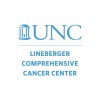Radiation Therapy During Surgery in Treating Older Women With Invasive Breast Cancer (NRR)
Breast Cancer

About this trial
This is an interventional treatment trial for Breast Cancer focused on measuring invasive ductal breast carcinoma, stage I breast cancer, stage II breast cancer
Eligibility Criteria
DISEASE CHARACTERISTICS: Histologically confirmed primary invasive ductal carcinoma of the breast Tumor size ≤ 3 cm No extensive intraductal component Tumor must not be attached to the skin, underlying muscle, or chest wall Candidate for breast-conserving therapy, as determined by the surgical and radiation oncologist Tumor amenable to segmental mastectomy (i.e., lumpectomy) No bilateral breast cancer No clinical or radiographic multifocal disease not amenable to single segmental mastectomy Patients with > 1 tumor mass in the same breast must have only 1 mass that is histologically malignant AND all other masses must be proven histologically benign Hormone receptor status: Not specified PATIENT CHARACTERISTICS: Age 48 and over Sex Female Menopausal status Not specified Performance status 0-2 Life expectancy At least 5 years Hematopoietic Not specified Hepatic Not specified Renal Not specified Other Not pregnant Fertile patients must use effective contraception No collagen vascular disease No medical condition that would preclude surgery Other prior malignancy allowed provided the following criteria are met: Patient has undergone potential curative therapy for all prior malignancies There is no evidence of any prior malignancy within the past 5 years Patient is deemed to be at low risk for recurrence of prior malignancy, as determined by the treating physician PRIOR CONCURRENT THERAPY: Biologic therapy Not specified Chemotherapy No prior chemotherapy for this malignancy Endocrine therapy Not specified Radiotherapy No prior radiotherapy to the breast Surgery No breast implants
Sites / Locations
- Lineberger Comprehensive Cancer Center at University of North Carolina - Chapel Hill
Arms of the Study
Arm 1
Experimental
Intraoperative Radiation Arm
Intraoperative radiotherapy (radiation therapy) during surgery for tumor excision.
Outcomes
Primary Outcome Measures
Secondary Outcome Measures
Full Information
1. Study Identification
2. Study Status
3. Sponsor/Collaborators
4. Oversight
5. Study Description
6. Conditions and Keywords
7. Study Design
8. Arms, Groups, and Interventions
10. Eligibility
12. IPD Sharing Statement
Learn more about this trial
